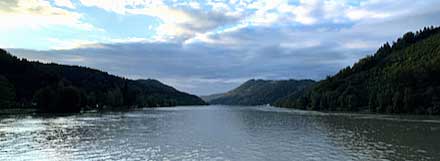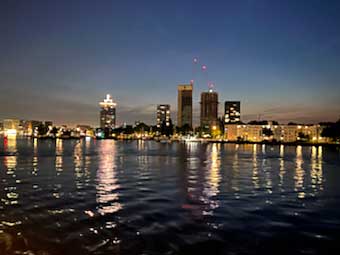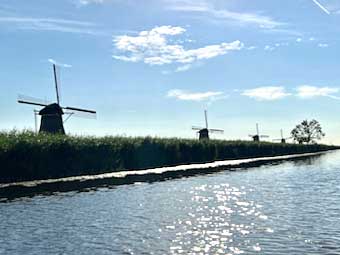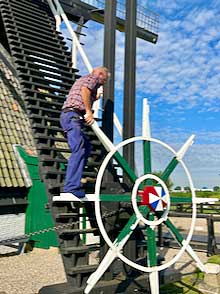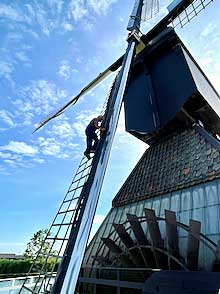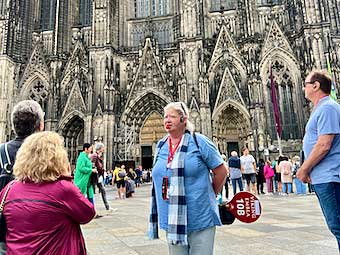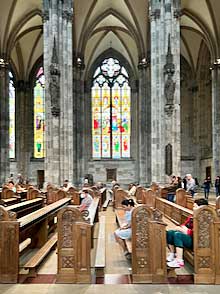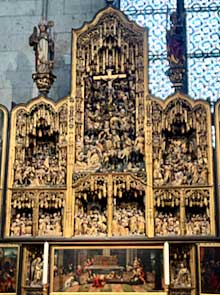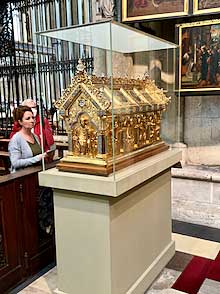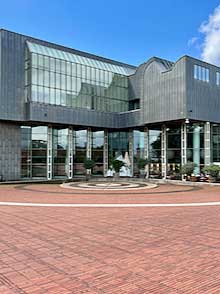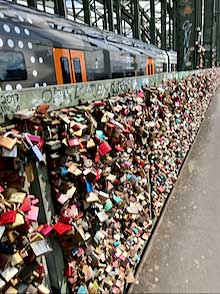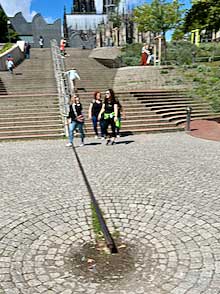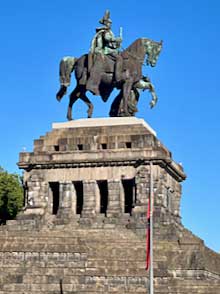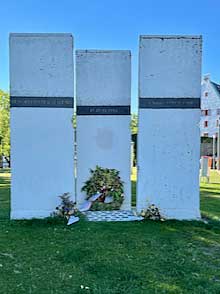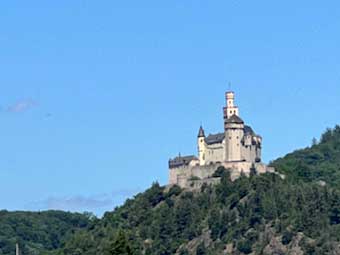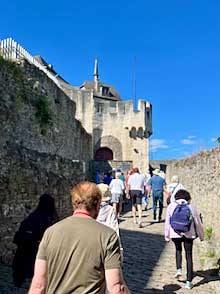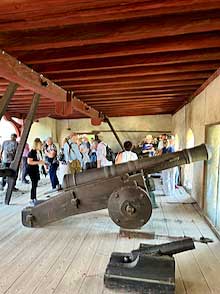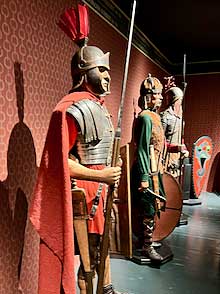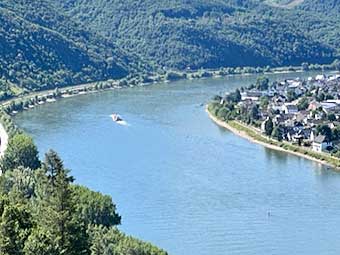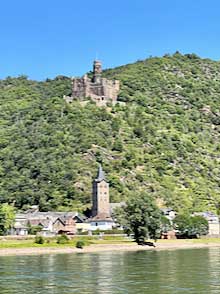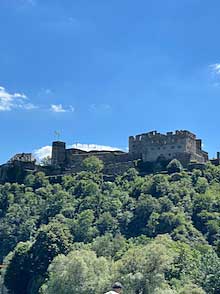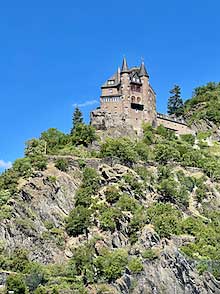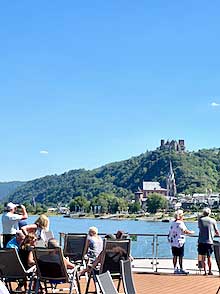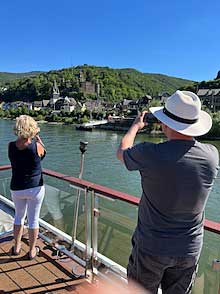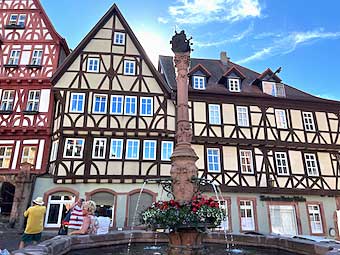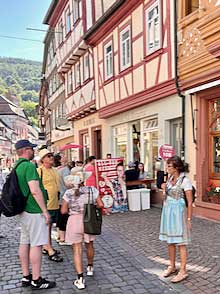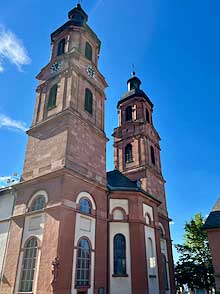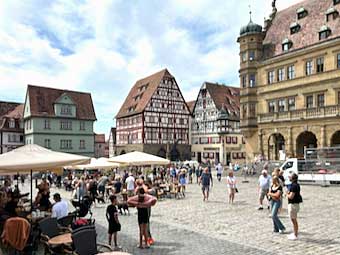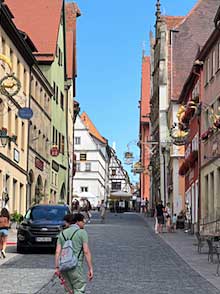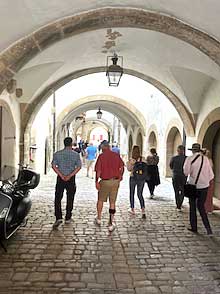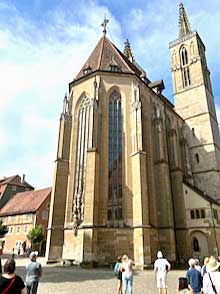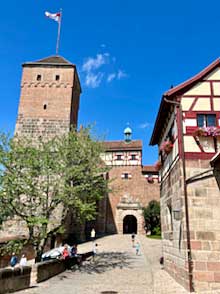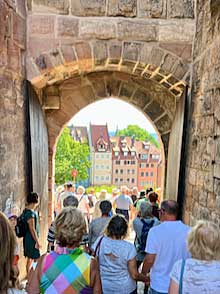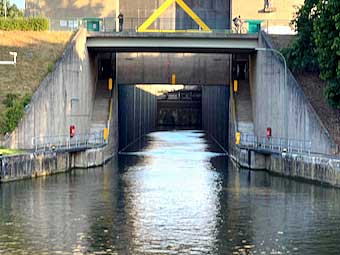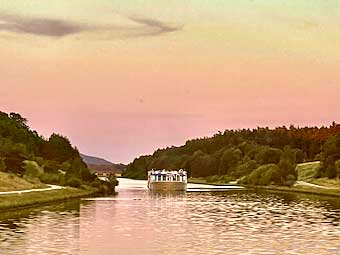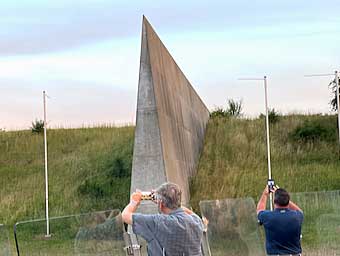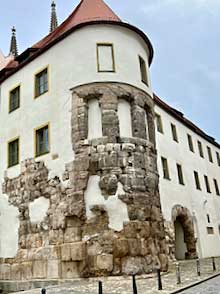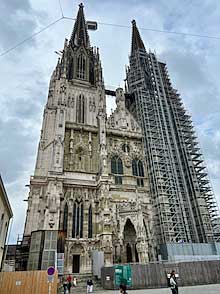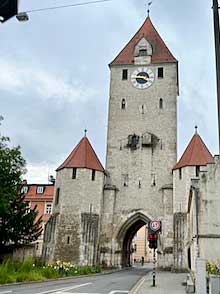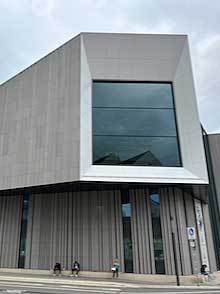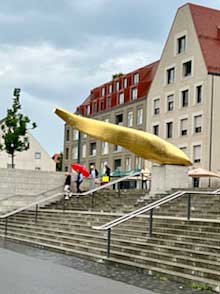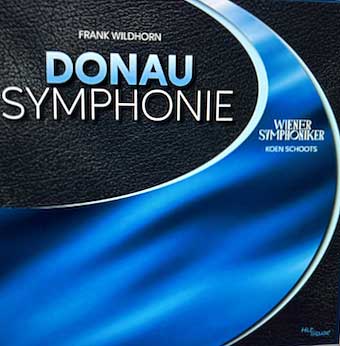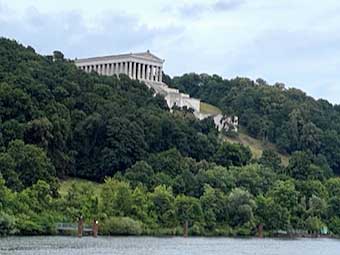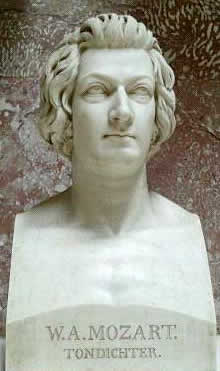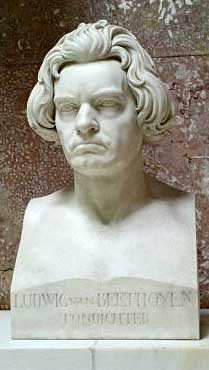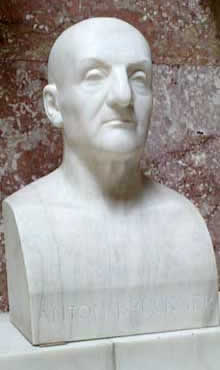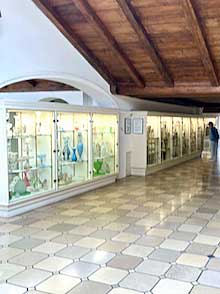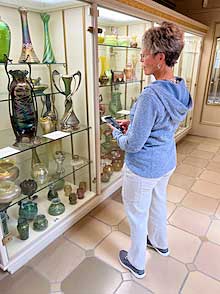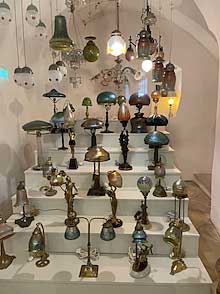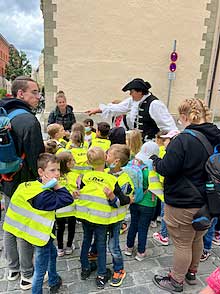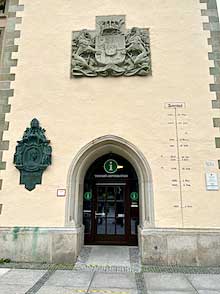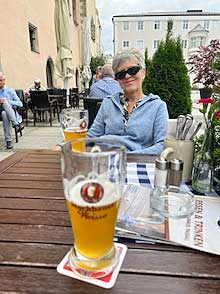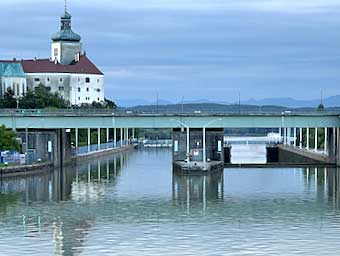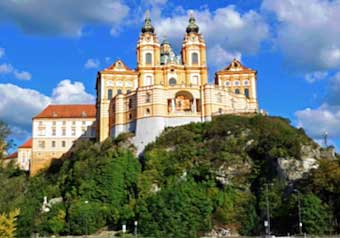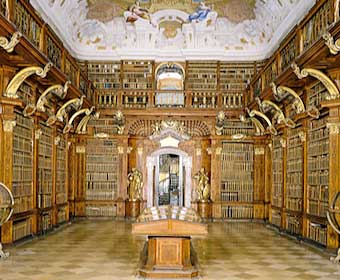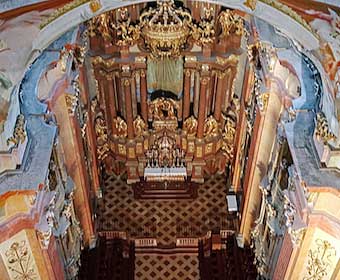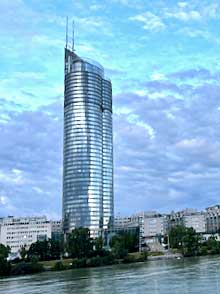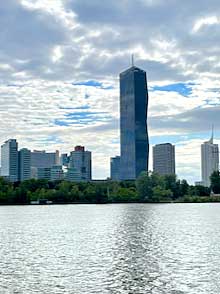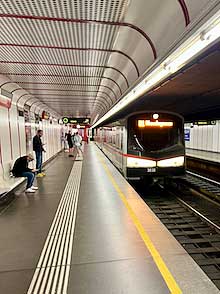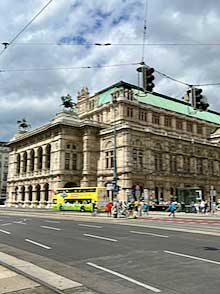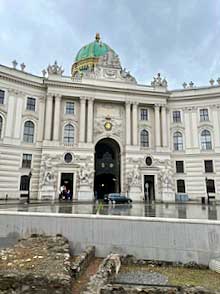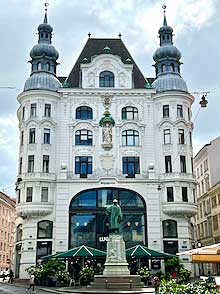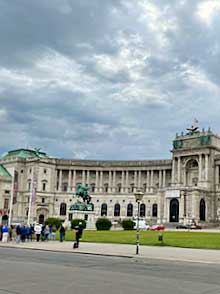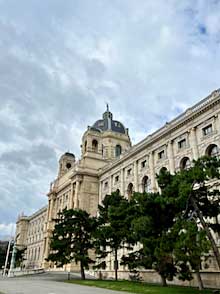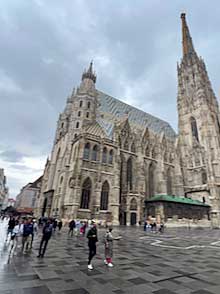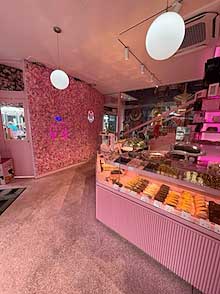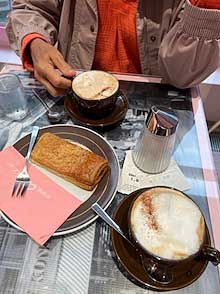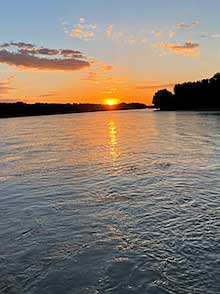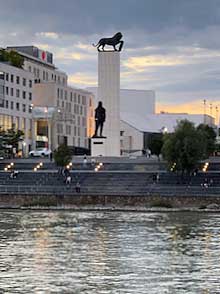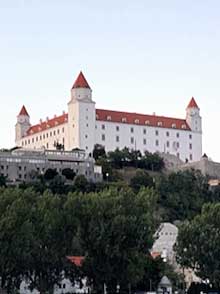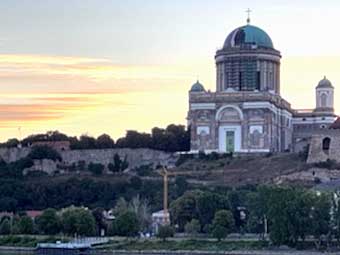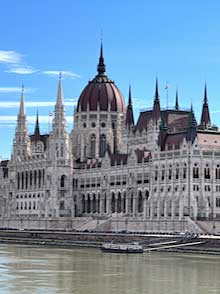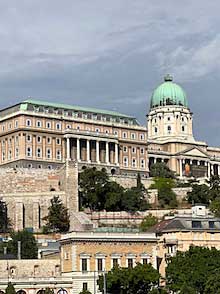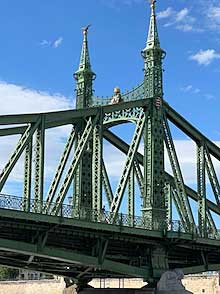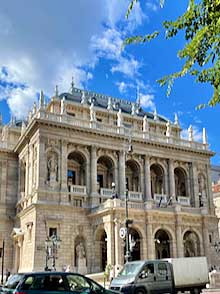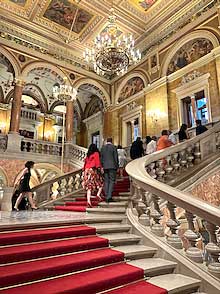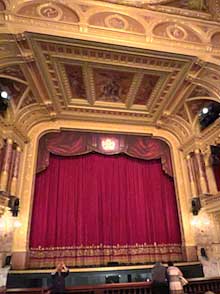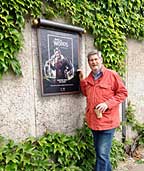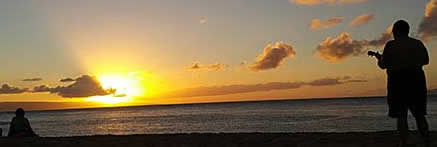 |
|
CRUISING EUROPE'S RIVERS |
|||
Story and photos by Brad Hathaway and as attributed |
|||
Cruising down (or up) a navigable river is one of our favorite ways to get to know a country. It takes you into the interior, traverses the rural areas in between the towns and cities, and gives you an opportunity to visit attractions in most all of them. You can get to know a country—or a lot of countries—without ever even changing hotels because your “hotel room” travels with you. Plus, if you really want to, you have the added magic of getting up every morning at sunrise to stand on the deck and watch the glorious scenery pass with few, if any, other passengers up that early. It’s their loss. The river cruising industry is highly developed in Europe. There are river cruises elsewhere (on the Yangtze in China, the Nile in Egypt, the Mississippi in the US) but nowhere are there more ships with more itineraries and more choices of luxury-versus- economy than in Europe. This year we took one cruise that transected the European continent by cruising on three different rivers and a canal that connected two of them. We cruised the Rhine River out of the Netherlands into Germany and went up the Main River. Then our ship took the Main-Danube Canal to the Danube River which threads through Austria, skirts Slovakia and flows through Hungary. We disembarked in Budapest—the river continued on to the Black Sea. The record-breaking dry summer in Europe is affecting river levels across the continent. The Danube has a number of dams which allow the measured release of water to maintain commerce, but the Rhine is more free-flowing—when there is water to flow. At the time of our cruise, all of our waterways were serviceable. Who knows what the balance of the summer holds? We were on a Viking River Cruises “Longship” which carries up to 190 passengers in a delightfully gracious environment for a 14-night itinerary. The ship is propelled by electric motors (the electricity being generated by diesel engines—if it were a car we’d call it a “hybrid”). The result is so quiet that at times we were able to hear the chirping of the birds on the banks from our cabin’s “french balcony” floor to ceiling window.
While our departure point was Amsterdam—the capital of the Netherlands—our first stop of note was in Kinderdijk where the historic windmills have been retained and restored. Windmills were the original “flood management” devices which allowed the lowlands to be developed for agriculture even though so much of the land is below sea level. Pumps driven by the wind raised rain water from the farmland which is enclosed by dikes into canals leading to rivers where more windmills pumped the water up into the river.
We stopped there for a tour hosted by a millwright operating one of the oldest windmills in the area. It was built in 1630 from a design from 1450. He demonstrated how the entire building was rotated to put the sails facing the wind and climbed up a sail to show us how the covering could be adjusted to just the right wind exposure.
Sailing out of the Netherlands and into Germany, our first stop was Cologne (or Köln in German). There, our guide took us to Cologne’s cathedral—the largest in Germany.
She gave us a full briefing on the cathedral which she explained was not destroyed by Allied bombing during World War II because it was valuable to bombardiers as a landmark from which to locate targets throughout the city. She carefully gave us background on its important splendors including the Shrine of the Three Kings said to hold the remains of the Bible’s three wise men.
Outside we walked by the concert hall which is actually below ground level. Traffic must be paused above ground during concerts because of the noise it creates below. We walked out on the Hohenzollern Bridge where lovers for years have attached padlocks to the railings and then tossed the key into the river to signal unending love—a practice we first became aware of in Russia many years ago. Less romantic was the sight of a single rail still embedded in the plaza pavement to mark the spot where the Nazis loaded trains with jews to be sent to the concentration camps during the Holocaust of World War II.
About fifty miles further on we stopped at Koblenz where the Mozelle River joins the Rhine. In the park at the juncture stands an equestrian statue of William I, the first head of state of a unified Germany, a post he took in 1871. In the park behind it stands a memorial to the unified Germany consisting of three segments of the Berlin Wall.
About eight miles further up the river we visited the Marksburg Castle on a precipice overlooking the town of Braubach. It dates to at least 1231 and, although it has changed hands from time to time, is considered to be the only fortress along the Rhine that has never been destroyed or fallen into disrepair.
We took a bus from Braubach most of the way to the castle and then hiked up to the entrance. Inside, we saw the cannons that once defended the site, and visited a display of the armor worn by soldiers over the centuries when the castle served a military function.
The castle overlooks a portion of the Middle Rhine.
This portion of the river is both beautiful and dotted with castles—some in ruins and some restored.
All in all, it makes for a delightful castle-watching afternoon.
At the confluence of the Rhine and the Main Rivers, we proceeded up the Main with a stop in Miltenberg, population about 9,000. There has been a town here for at least two thousand years which was originally a fort under the Romans. But it draws most of its tourists today because it looks like a real-life Disneyland version of a “medieval village.”
Our guide told us that the town has survived in this condition because it was not damaged in World War II. Why? Because, she said, “We kicked the Nazis out so there wasn’t anything for the allies to bomb when the war turned against Hitler.” She told the story of the last ditch effort by the Nazis to command the town when the priests in the twin-towered church simply rang all their bells simultaneously—so the Nazis couldn’t be heard and they left. It is a good story, don’t you think? We happened to be there when the bells from just one tower rang out—and, trust me, they were loud.
There are times when you want to explore deeper into the country to see what it is like away from the river. We took a bus for such a jaunt up to Rothenburg ob der Tauber, one of Germany’s last walled medieval towns.
Here, such calamities as bubonic plague and the Thirty Years War left what had been a thriving mercantile center essentially stranded in a series of lengthy depressions. But German romantics discovered it in the nineteenth century as a wonderful retreat from the then-modern hustle and bustle of the emerging industrial revolution. They discovered lanes that would make great shopping streets, alleys and cobbled byways, and a superb church dating from the 14th and 15th centuries. One feature that caught our attention was the profusion of hanging signs along that commercial street.
In another German city we skipped the World War II- and Nazi-related aspects to concentrate on the castle overlooking it all: Nuremberg Castle. On top of a hill adjacent to the massive city walls stands the “Imperial Castle” built from the 13th to the 16th centuries. Down hill from that are the buildings of the Imperial City which housed the population in times of peace but was close enough for them to rush to safety in the castle when they came under attack.
To get from the Main River to the Danube we transited about a hundred miles of the Main/Danube Canal. That meant many locks, first to lift the boat up past the highest point and then back down to join the Danube.
The canal, itself, was a fairly narrow and very smooth body of water on which cruising gave us lovely views on both sides of the boat.
At the highest elevation we crossed the “Continental Divide”—the point at which (theoretically) a drop of rain water would have half its water flow north-west to the Atlantic Ocean while the other half flowed south-east into the Black Sea. This is the highest point in the world an ocean-going ship can reach. Of course, there is a monument to mark the spot. It is a sharp pointed concrete slab on the bank of the canal. Naturally, we all climbed on deck to photograph the monument.
We flowed along the canal which led to the Danube at Regensburg, with its eclectic mixture of the old and the new. Old? Take a look at the remains of the Water Gate—no, not the Watergate of Richard Nixon in US political history, but the Water Gate of the Roman fortress dating to the year AD 179—or the imposing cathedral which was built over a period of nearly 250 years from 1280 to 1520 and which is now undergoing renovation. The entrance to the old town is under a clock tower built in the 13th century.
New? There is the The House of Bavarian History, a museum designed by the Wörner Traxler Richter architecture firm, which was completed just three years ago. It is on a square just up from the river bank where a striking piece of modern art is displayed—the “Goldener Waller” (or “golden catfish”) by the artists Cisca Bogman and Oliver Störmer, who work as team under the name STOEBO.
For our first morning on the Danube, I put on my earphones and called up a recording of the symphony that the Broadway composer Frank Wildhorn wrote during the covid pandemic lock-down. His “Donau Symphonie” is an alternately lovely and lively nine-movement piece performed by the Wiener Symphoniker under the baton of Koen Schoots, which was the perfect accompaniment to a daybreak having coffee on deck.
As we floated down the Danube, with the sounds of Wildhorn’s symphony in my ears, we passed the faux-Greek temple to German arts and culture constructed by Bavarian King Joseph I in the 1830s. It contains marble busts of 130 great “Germans” in history. We didn’t stop to visit but I’d been there before and snapped a few shots of busts of my favorites.
Our last stop in Germany was at Passau where we visited the Glass Museum with what is described as the largest collection of glass made during the three centuries between 1650 and 1950. Some 15,000 objects are on displa—approximately half of the museum’s collection.
Outside the museum we passed a guide in traditional garb explaining the local sights to a group of school children. That was right next to the city hall where the heights of floods over the centuries is displayed with the 1501 flood topping the most recent one which was in 2013. In front of the city hall we paused for our favorite brew—a classic hefeweizen wheat beer.
Once we’d passed the canal didn’t mean we’d finished with locks. Indeed, in total we went through 68 locks as we transited the 1,100 miles of this cruise. Here’s the first lock in Austria.
We knew about most of the sights we were going to see on this cruise and looked forward to it with great anticipation. But the surprise highlight was a destination we hadn’t known of before—the Stift Melk, or the Abbey of Melk. This working Benedictine abbey on a bluff above a small town (about 5,000 population) was founded nearly a thousand years ago (well, 933 years to be precise) but the buildings on site now date to the 1700s and have been meticulously restored. It currently has about 900 students in its high school as well as a community of Benedictine monks.
While the tour of the abbey’s exhibit was interesting, it was the entrance to the library that blew us away—and it is just the main library room where some 16,000 volumes can be seen. There are more rooms up a spiral staircase in the back. In total, the library contains 100,000 books. Of those, 1,800 are manuscripts copied by hand by monks before the printing press took over the task. The earliest tome dates to the early ninth century; two-thirds of them are from the 15th century.
If we thought the library was impressive, we were ill-prepared for the experience of walking into the church. We’ve been in the Sistine Chapel at the Vatican and we’ve been in cathedrals from York to Barcelona, but none compared to the total sumptuousness of this room. This baroque masterpiece by architect Antonio Beduzzi is as colorful and spectacular today as it was in the 1700s.
Our entry into Vienna, Austria’s capital city, was something of a surprise in that the port area is built up with high rise office buildings—not the classic Viennese atmosphere we expected. But a quick jaunt on the subway took us into the old town in the center of the city.
Soon we were seeing the Vienna we expected: The Opera House, the Riding School (home of the famous Lipizzan stallions) and grand Golden Age architecture.
The history of the Hapsburg dynasty dominates the views in Vienna with the Hofburg Imperial Palace and the buildings along the Maria-Theresien-Platz. And, of course, there is the cathedral on Stephansplatz.
I have to confess, however, that while we had one more cathedral to visit, we took a break on Stephansplatz to grab a pastry and cappuccino at one of Vienna’s famous establishments, the all-pink Aida.
We departed Vienna—and Austria—in the late afternoon which meant we cruised overnight down the portion of the Danube that forms the border between Hungary and Slovakia. There were no stops in Slovakia, not even in the capital, Bratislava. In fact, our first glimpse of Slovakia came just as the sun set. The next morning, I was up early as usual, and saw a bit of Bratislava as the sun came up. I saw the monument on the embankment which has a lion on a pylon in front of a bronze statue of the Czech hero Štefánik, and got a good view of the Bratislava Castle.
And then, one last listen to Wildhorn’s Danube Symphony as we finished our Danube cruise toward Budapest. On the way, we passed the Esztergom Basilica on the Hungarian side of the Danube. It is the tallest building in Hungary and has one of the tallest domes in the world—I’m told the acoustics under the dome have a reverberation time of nearly ten seconds. I’d love to hear it someday.
Pulling in to Budapest was like a return to a favorite city. Here, again, were sights of the largest parliament building in the world situated on the Pest side of the river, the Royal Palace on the Buda side, and the bridges linking the two together.
For our last night in Europe (for now) we headed to Budapest’s fabulous Opera House, the Magyar Állami Operaház, for a thoroughly satisfying performance of Verdi’s Un Ballo in Maschera (A Masked Ball).
It was sung in the original Italian with supertitles in English and in Magyar so it was easy to follow the action. The sound was glorious and a fitting climax to a glorious cruise. ABOUT THE AUTHOR
|
